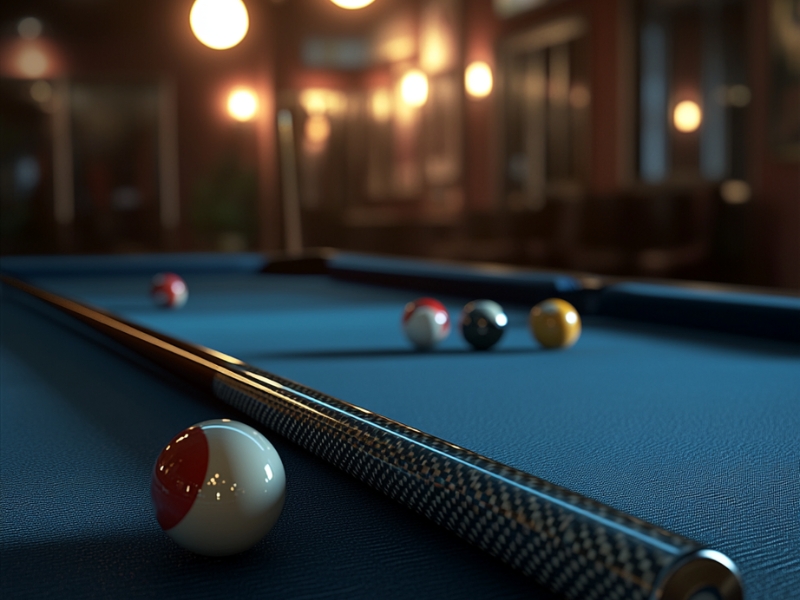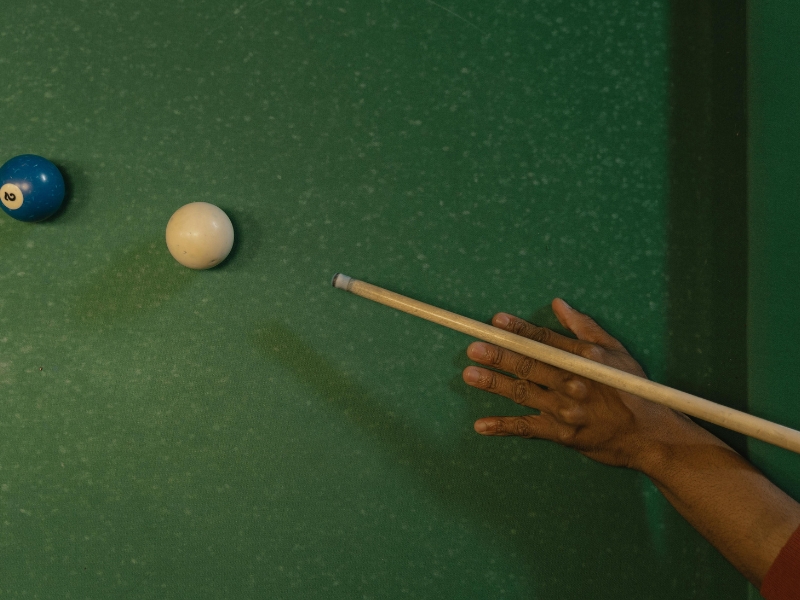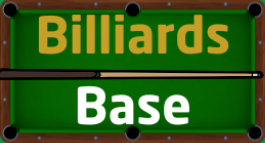The shape of your cue tip is crucial for accuracy, spin control, and consistency.
How many times have you taken a shot, only for it not to hit quite right or not follow the path you intended for it?
It might not be your technique, and might be because your pool cue tip isn’t shaped correctly.
If you’re looking to achieve maximum precision in your pool shots, then consider shaping your pool cue tip.
Why Is Shaping a Pool Cue Tip Important?
Shaping a pool cue tip is important for ensuring consistent contact with the cue ball for precise shots. Having a good pool cue tip shape also improves your spin control, allowing you to use topspin, backspin, and sidespin. Finally, shaping your pool cue’s tip will reduce miscues by creating a smooth and even striking surface. Be aware though, you can’t prevent wear and tear – eventually, you will need to replace your pool cue tip, so try to be careful when shaping this one!
Not only does properly shaping your pool cue tip improve your performance, but it will last longer than a flat or irregular tip. If your pool cue tip needs better shaping, it’s highly recommended that you address that sooner rather than later.
Tools You’ll Need to Shape a Pool Cue Tip
There are a few tools you’ll need to shape a pool cue tip. Luckily, these are all easy enough to acquire and fairly inexpensive. If you already keep on top of your pool cue maintenance, you’ll probably already have most, if not all of these tools.
Tip shaper or tip tool
You can get either tool, but a tip shaper would be the recommended choice.
Fine grit sandpaper
You’d be looking for a sandpaper offering between 400-600 grit. This will be ideal for the type of work associated with shaping a pool cue tip.
Chalk
You’ll need some chalk for finishing and testing when shaping your pool cue tip. Have one handy!
Cue tip clamp
A cue tip clamp isn’t a mandatory tool to use, but it’ll definitely make the process of shaping your pool cue tip simpler.
Cue tip clamps give you extra precision over your cuts, something that will prove very useful as you’re shaping.
Step-by-Step Guide to Shaping a Pool Cue Tip

Now that you’ve assembled all the tools you’ll need, it’s time to shape your pool cue tip.
1. Assess the Current Shape of the Tip
The first thing you need to do is assess the current shape of the tip. You should be checking the tip for wear, uneven surfaces, or flat spots.
If you compare the tip’s profile to a nickel or dime radius, it can help you think better about the type of tip shape you’re aiming for.
A nickel-shaped tip is ideal for general play, but if you’re a player who usually uses more spin and has a very precise stroke then a dime-shaped tip is best. If you’re not sure – stick to the nickel shape.
2. Secure the Cue
Now that you’ve got a good sense of the current cue tip’s shape, you want to secure the cue.
Place the cue stick in a holder, or you can lay it flat on a non-slip surface. Ensure the cue is stable to avoid accidental movement as you’re shaping. This is where a cue clamp comes in handy, as it will provide additional stability.
3. Use a Tip Shaper
After securing the cue, you should use a tip shaper. Placing the shaper over the tip, gently rotate it in a circular motion while applying even pressure.
Regularly check progress by comparing the curve of your tip to the desired radius (nickel or dime).
4. Sand the Edges of the Tip
After shaping the tip, you’ll need to sand the edges of it. Using your fine-grit sandpaper, begin smoothing the edges and removing any burrs. Rotate the cue stick as you sand, ensuring an even finish across the surface of the tip.
Take care to avoid over-sanding, as this can reduce the tip’s lifespan. You should lightly sand in one direction to avoid creating grooves in the tip.
5. Test the Tip
Now that you’ve sanded the cue tip’s edges, you need to test the tip.
Chalk the newly shaped tip and take a few practice shots with it. Observe how the cue ball reacts to your shots, and adjust as necessary if you’re finding control, precision, and any spin applied is lacking.
It is a bit of a trial and error process, but be patient and you’ll find the best cue tip shape for your play style.
Common Mistakes When Shaping a Pool Cue Tip

There are many common mistakes people make when shaping their pool cue tip. The most common mistakes are:
- Over-shaping the tip
- Using the wrong tools
- Ignoring tip maintenance
Make sure to avoid making these mistakes!
1. Over-Shaping the Tip
Over-shaping the tip is perhaps the most common mistakes players make when DIYing their cue tip shapings.
The problem with over-shaping is that it reduces the lifespan of the tip, or creates an uneven surface which affects your shots. To avoid doing this, use light, controlled motions when shaping the tip and check progress frequently.
2. Using the Wrong Tools
Using the wrong tools is another common mistake people make when shaping their pool cue tip. Improvised tools like knives or coarse sandpaper without the correct grit can damage the tip or ferrule.
This can make the solution much more costly for you to fix, so always use the proper tools designed for cue tips rather than makeshift ones.
3. Ignoring Tip Maintenance After Shaping
Another common mistake players make is ignoring tip maintenance after shaping. You do need to be providing regular upkeep, or your shaped tip will lose its effectiveness over time.
Re-shape as needed and consistently chalk the tip to maintain performance.
How Often Should You Shape a Pool Cue Tip?
Shaping your pool cue tip is great, but how often should you do it?
The frequency of shaping your pool cue tip depends upon a few factors:
- Frequency of play: If you play more often, then logically you’ll have to more regularly shape your cue tip.
- Type of cue tip: If you’re using a softer cue tip, keep in mind that it’ll wear out faster than a hard tip. You can use a medium tip for balance.
- Playing style: If you use a lot of spin in your shots, then you’ll need to re-shape your tips much more often.
In general, you should check your cue tip after every 10-15 hours of play and re-shape as needed. If you’re using a cue from one of the top pool cue brands, you might get a few extra hours.
Advanced Tips for Shaping Your Pool Cue Tip

If you’re more comfortable than a beginner would be at shaping your pool cue tip, then you can start throwing in some advanced methods.
Experiment with Different Shapes
As mentioned earlier, the shape of your cue tip will affect the types of shots you can take. Try a nickel shape for power shots and a dime shape for finesse shots, and see which suits your play style better.
You should adjust the shape over time based on what works best for you, and over time you’ll see your own specific play style emerge.
Practice with Spare Cues
By practicing with old or spare cue sticks, you can practice shaping before working on your primary cue.
That way, even if you make a mistake, you haven’t damaged the cue you care most about. Experiment with different cue shaping tools to find your most comfortable products and workflow also.
Reshaping Your Pool Cue Tip
A well-shaped pool cue tip is crucial for greater accuracy and spin control. Shaping a cue tip is delicate work but perfectly doable by yourself.
By learning how the shape of your cue tip affects your shots, you can start to customize your cue truly for your specific play style. When you play with the correct cue shape, you’ll see a significant improvement in your shotmaking!
FAQs About Shaping Pool Cue Tips
What shape should a pool cue tip be?
- A nickel shape is ideal for general play, while a dime shape is better for advanced spin shots.
Can I shape my cue tip without special tools?
- Yes, fine-grit sandpaper can be used in a pinch, but a tip shaper provides better precision.
How do I know if my tip needs reshaping?
- If the tip appears flat, uneven, or doesn’t hold chalk well, it’s time to reshape.”
